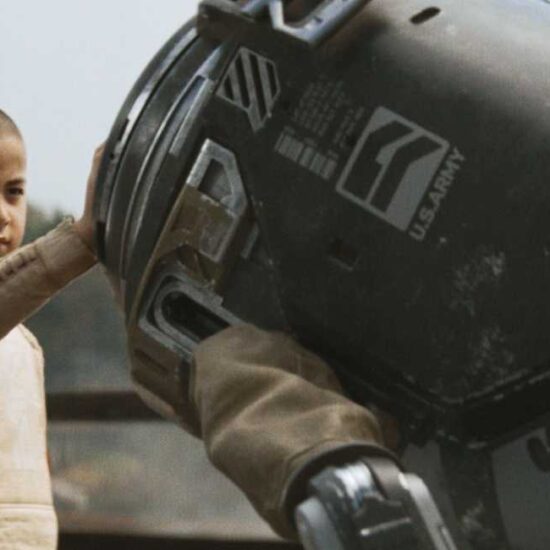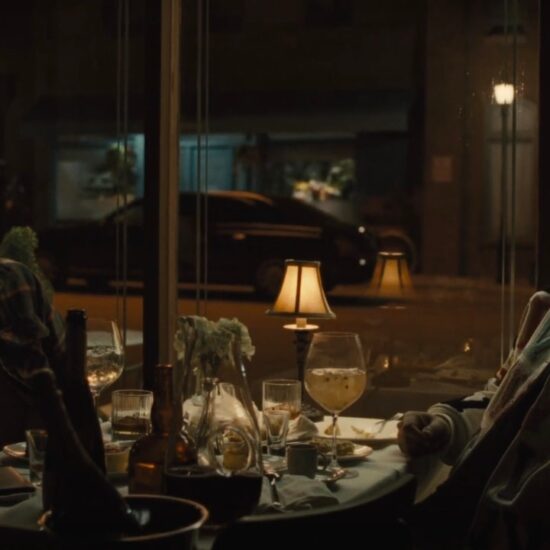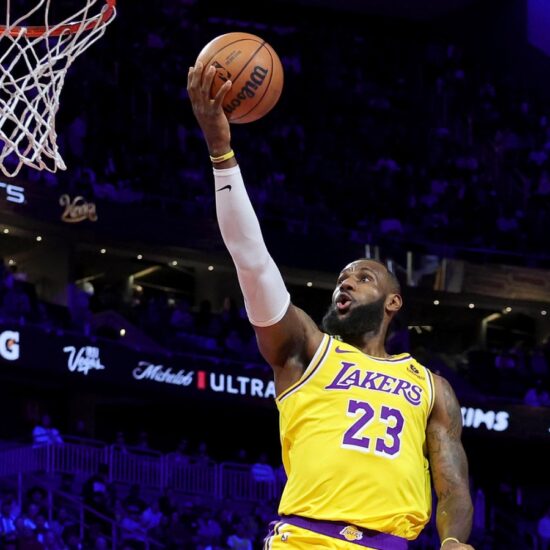
Over the past few weeks, Facebook has inundated me with clips from Mel Gibson’s Apocalypto. I don’t know how or why it singled that movie out specifically for my video feed, but such is life.
Anyways, I saw Apocalypto when it was first released back in 2006. I enjoyed it, but never had the urge to watch it again. There aren’t a lot of nights where I yearn to watch a jaguar bite the head of some poor soul, if you know what I mean. So, after viewing a majority of the clips on Facebook, I opted to hop on Amazon Prime for a return to Gibson’s violent Mesoamerican rainforest and … realized Apocalypto is pretty damned awesome. It’s also about as brutal as one would expect from the man who gave us The Passion of the Christ.
I’m certainly not the first to commend Gibson for his skill behind the camera. The man knows how to direct the hell out of a movie, and I appreciate the extra steps he takes to ensure audiences are completely swept up in his world. Aside from a few wonky special effects shots, you fully believe in this mesmerizing environment brought to stunning life by Dean Semler’s exceptional cinematography. The use of the Yucatec Mayan language also lends the pic an extra layer of authenticity, although I’m not sure how authentic the language is to this particular time period. Nor am I sure how true-to-life Gibson’s portrayal of Mayan culture is — depicted here as a violent, bloodthirsty society prone to decapitations and a number of gruesome deeds. (To be fair, Gibson himself has said this film shouldn’t be seen as a historical document.)
Still, the show must go on, as they say, and from an entertainment perspective, Apocalypto delivers. Mostly because, despite its attempts to convey something akin to reality, the film is essentially a 90-minute buildup to a 45-minute chase sequence. It’s glorious.
For those unaware, the story follows Jaguar Paw (played by the excellent Rudy Youngblood), a peaceful hunter who is kidnapped along with members of his tribe by soldiers from the Mayan kingdom. At one point, he manages to break free from his captors and retreats back to his homeland with his enemies in pursuit.
And that’s it. That’s the plot.
The first act sets up Jaguar Paw’s peaceful existence of hunting boar and picking on a newly married tribesman, Blunted (Jonathan Brewer), who is tricked into eating raw testicles and rubbing a painful powder on his genitals. We see the group as normal people just making their way through the wilderness and doing what they can to survive.
One of the best moments of the film arrives early on when Jaguar Paw senses danger in the forest. Gibson is a master at conveying human emotion through visuals alone, and his work here (coupled with James Horner’s eerie score) is extraordinary:
Considering Apocalypto’s lengthy 140-minute runtime, the pic moves at a remarkably brisk pace. After a sojourn in Jaguar Paw’s village, we’re introduced to a group of Mayan warriors who arrive and butcher most of the tribe and capture the survivors. Gibson doesn’t shy from the violence — we see the bad guys murdering women, children, and even babies without much thought — but doesn’t glorify the carnage either. The sequence is appropriately horrific and aptly sets the tone for the rest of the picture.
Gibson and writer Farhad Safinia also establish a subplot involving Jaguar Paw’s pregnant wife Seven (Dalia Hernandez), who ends up stuck in a hole with her young son. Her presence effectively gives our main protagonist something to live for, though I wonder if the film might have worked even better had we never cut back to the stranded woman and remained, instead, with Jaguar Paw: hoping for the best, even whilst preparing for the worst.
No matter, the side plot is still effective. Seven must endure her own hardships — monkeys, rain, birth(!) — which are enough to hold our attention any time we cut away from Jaguar Paw’s journey.
There’s also another interesting side story involving the leader of the Mayan soldiers, called Zero Wolf (Raoul Trujillo), and his son Cut Rock (Ricardo Diaz Mendoza). This might seem weird, but I actually really liked Zero Wolf. He’s a no-nonsense type who is just doing his job, no matter how horrific his actions. He shares a couple of great moments with his kid, who he genuinely seems to care for:
The film has an affinity for fathers imparting pearls of wisdom on their sons, as seen in the moment Jaguar Paw witnesses his own father’s gruesome death — but not before the old fella tells his offspring: “Don’t be afraid.”
Gibson uses the journey as a tool to show off advancements in civilization — though, ironically, the closer the group gets to modern society, the more violent the world becomes. At one point, Zero Wolf nearly gets squashed by a falling tree and he shouts at the Mayan “lumberjacks” “I’m walking here!” Later, the group bumps into a young girl with smallpox (a disease brought by Spanish explorers and traders), who seeks their help but is quickly pushed away. The moment turns dark when the girl suddenly issues a prophecy:
Creepy stuff.
Once in the great Mayan city, we get another amazing scene in which Blunted silently watches his mother-in-law after she is deemed worthless and set free following an auction. The two characters —who had never gotten along back in their village — engage in a silent series of looks that conveys so much with so little.
We finally arrive at the sacrifice scene, which is as wild as you’d expect. I have no idea if the Mayans used their vast temples for this sort of practice, but man … I can’t decide what’s more disturbing: the piles of bodies lingering alongside the temple, or the fact everyone behaves as if this just another Saturday in the Maya capital.
Okay, now we get to the really good stuff.
After his life is spared seemingly via divine means, Jaguar Paw and the other survivors are led to a clearing and told to run. If they reach the forest, they can go free. Fair enough, except Zero Wolf and his men hurl rocks, arrows and spears at them during their attempted escape. Despite the gratuitous violence on display, this sequence is thrilling. I love the acting, the tension, the music … it’s brilliant.
Now we come to the third act and the real reason (I suspect) Gibson wanted to make Apocalypto: the big chase. Jaguar Paw, wounded, escapes into the forest in a desperate attempt to reach his home. Zero Wolf, angered by his son’s untimely demise, is in hot pursuit. Again, note how Jaguar Paw gains strength the further back in time he traverses, while Zero Wolf’s men decrease in effectiveness as they move away from civilization.
During this extended finale, Jaguar Paw faces a series of tense scenarios he must somehow overcome. After evading his enemies by hiding in a tree, the young man finds himself face-to-face with a jaguar.
After running all through the night, Jaguar Paw arrives at a massive waterfall resulting in one of the most amazing shots of the entire film. It’s not digital, either. The camera starts over the actor’s shoulder and soars all the way to the bottom of the falls so that we get a true sense of the magnitude of Jaguar Paw’s situation.
Gibson has a little fun with the remaining scene, mostly by showing Jaguar Paw’s exasperated reactions to his pursuers’ determination. Even after one of them hits a rock after leaping from the top of the falls.
Jaguar Paw then falls into some quick sand, but manages to pull himself out, gather his energy and prepare for one final stand in my favorite moment from the film:
Chills, man. I get hyped just watching that brief clip!
Now on his home turf, approximately two hours into the film, having endured practically every form of suffering one could imagine, Jaguar Paw finally gets to take control.
To start, he chucks a live wasps’ hive at Zero Wolf’s group, then shoots one of them with poison darts (achieved by coating the tips of some thorns with poison from a toad).
Eventually, he comes face to face with Middle Eye (Gerardo Taracena) — the literal bane of Jaguar Paw’s existence. The villain delights in torture and murder and has established himself as “the one guy our hero must kill for audiences to walk away satisfied.” Similar to Braveheart, Gibson paints the villains of Apocalypto in a manner that makes audiences accept their grisly comeuppance — and whoa boy, does Middle Eye ever get his comeuppance!
Is Gibson’s approach to the material a bit cartoony? Sure. Effective? Absolutely. Apocalypto is essentially an artsier, greener version of Die Hard — another variation of the one-man army formula seen in the old 80s action pictures. It’s certainly not subtle, and obviously leans on Old Testament eye-for-an-eye ideology to deliver audience-pleasing vengeance, but that’s precisely what makes the pic stand out from others of its ilk.
By the film’s end, once Jaguar Paw has evaded all of his captors, saved his wife (who somehow gives birth whilst staying afloat in a hole slowly filling with water), and bumped into a few Spanish conquistadors, all we can do is breathe a sigh of relief for our battle-hardened warrior. Every path he takes from this point on likely leads to some form of death at the hands of an advanced race, which makes his victory more bittersweet than satisfying. At least, that’s how I viewed the finale.
Still, as they typically say, it’s about the journey. To that end, Apocalypto is one hell of an adventure.













